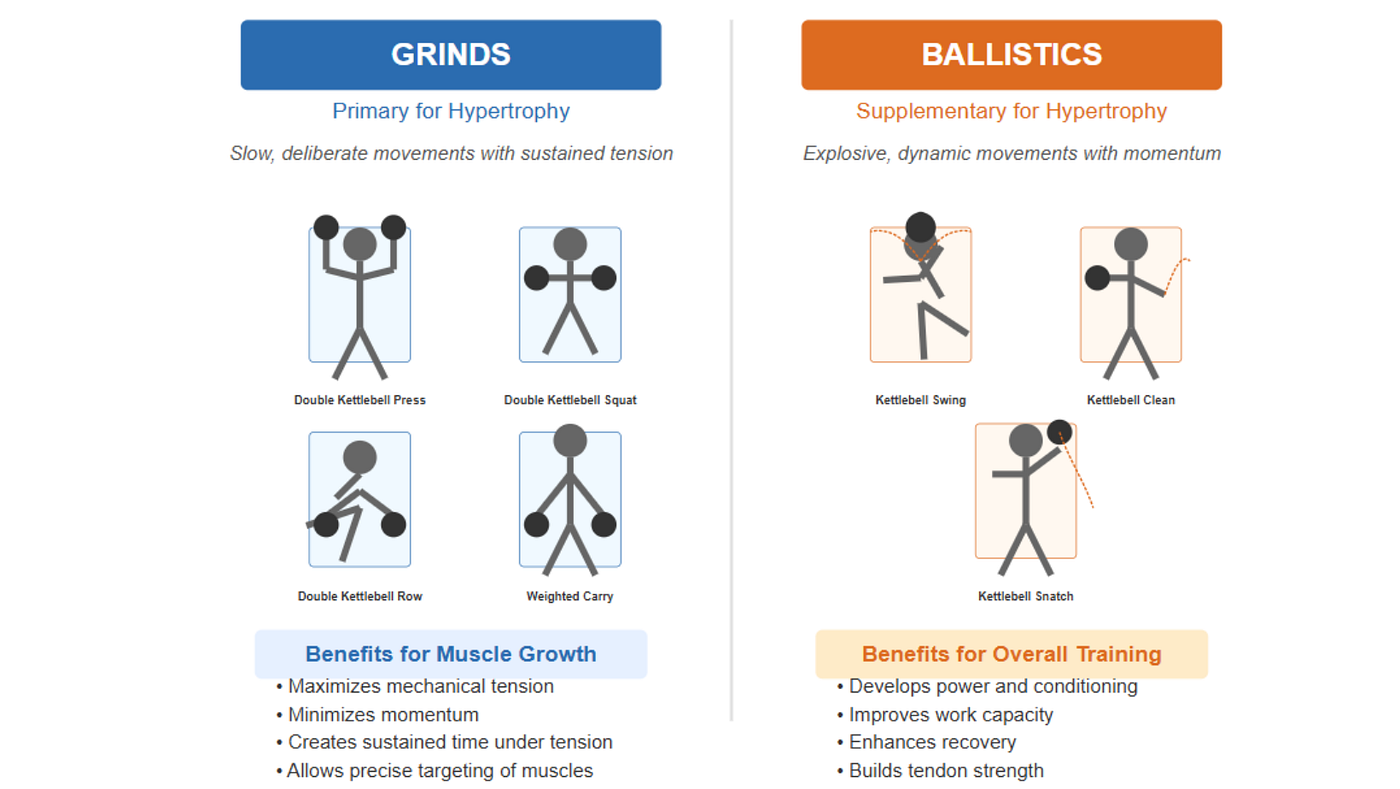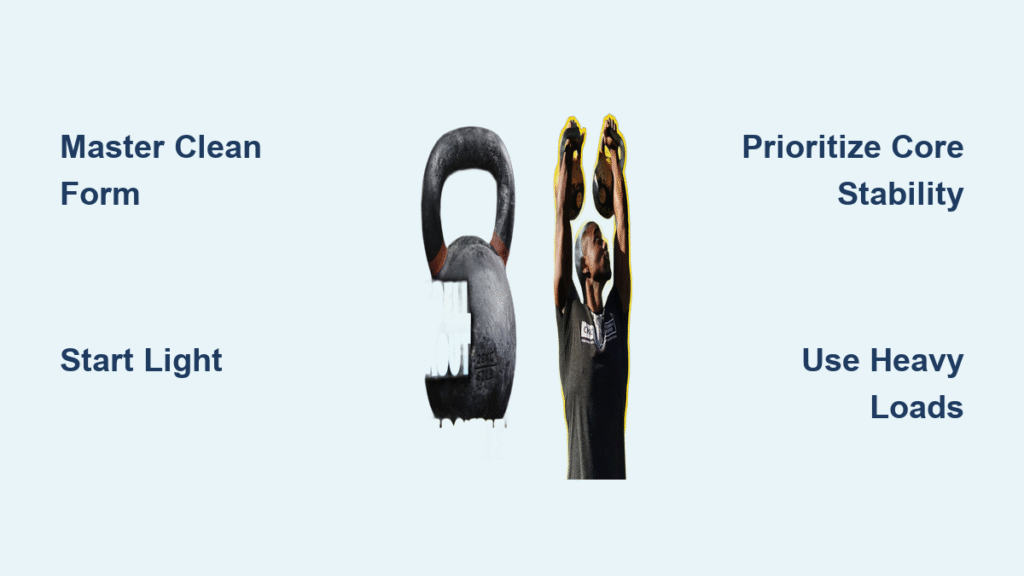Two kettlebells in your hands transform your training instantly. Heavy double kettlebell exercises build serious muscle, strength, and power while slashing workout time—no more “conditioning-only” myths. When you load both sides equally, your core stabilizes pure bilateral force instead of fighting rotation, letting you move heavier weight with better form. This guide cuts through the noise to show exactly which double kettlebell exercises deliver maximum gains, plus ready-to-run programs for strength, size, and fat loss. You’ll discover why doubles outperform singles for building posterior-chain mass and shoulder stability, plus avoid common pitfalls that wreck SI joints.
Forget chasing high reps with light bells. Heavy double kettlebell protocols build mass, maximal strength, grip strength, and core stability far more efficiently than single-bell work. By removing anti-rotation demands, bilateral loading lets you safely handle heavier weight—think 2×32 kg swings that outperform barbell deadlifts for posterior-chain development. But respect the prerequisites: master single-bell swings, cleans, presses, and squats first, and ensure shoulder mobility to lock both arms overhead without rib flare. Start lighter than you think (2×16 kg even if you press 24 kg single-arm) to groove patterns and protect your joints.
Why Heavy Doubles Build More Muscle Than Singles

Double kettlebell exercises eliminate the anti-rotation challenge of single-bell work, redirecting energy into pure strength and hypertrophy. Your core braces against symmetrical force rather than twisting, enabling heavier loads and shorter workouts with superior results. Lifters consistently report thicker glutes, hamstrings, and spinal erectors from heavy double swings that barbell deadlifts never matched. Crucially, this bilateral loading transfers directly to pressing strength—athletes achieve stricter lockouts and higher overhead stability. But skip the outdated gatekeeping rules: you don’t need 200 snatches before starting doubles. Focus instead on crisp single-bell technique and shoulder mobility screens. Begin conservatively; 2×16 kg cleans feel radically different than single 24 kg cleans, and rushing load progression guarantees SI joint pain.
Master These 6 Foundational Double Kettlebell Moves
Double Clean: Your Front Rack Gateway
This dynamic deadlift-to-rack movement powers all front-loaded lifts. Keep elbows tight against ribs during the pull, finish with vertical forearms and elbows resting on hip bones, and avoid flipping the bells. Poor form destroys wrists instantly—perfect cleans enable heavy front squats and long cycles. Program 5 reps × 4 sets with 2×20 kg as your starting point, resting 2 minutes between sets. Watch for rib flare at lockout; if your torso leans forward, drop weight immediately.
Double Front Squat: Quad and Core Annihilator
Rack bells tightly against your body with elbows high, then squat ass-to-grass while maintaining vertical torso alignment. The bilateral load creates full-body tension rivaling barbell front squats, with anterior core working overtime to stay upright. Start with 5 reps at 50% of your single-bell max load (e.g., 2×16 kg if you squat 24 kg single). Key cue: Squeeze glutes hard at the bottom to drive upward explosively. Five brutal reps build quads and core resilience faster than any machine.
Double Swing: Posterior-Chain Power Builder
Stand wider than hip-width, hike both bells between your legs, then snap hips violently to lockout. Unlike single swings, bilateral loading lets you safely handle heavier weight (2×32 kg) for explosive power and posterior hypertrophy. Ten heavy reps build glute and hamstring mass that barbell work can’t match. Critical detail: Lock knees and hips simultaneously at the top—no leaning back. If your lower back strains, reduce weight by 25%; quality beats ego every time.
Double Press: Shoulder Stability Benchmark
Press both bells vertically while squeezing glutes and exhaling hard through the sticking point. Finish with biceps by ears and strict overhead lockout. A 2×24 kg strict press is already elite; 2×32 kg places you among the strongest lifters globally. Program 3–5 reps × 4 sets with 2 minutes rest. Warning: If shoulders shrug toward ears or ribs flare, stop immediately—this indicates insufficient shoulder mobility.
Double Bent-Over Row: Mid-Back Thickness Secret
Hinge until torso nears parallel, pull bells straight to lower ribs while keeping spine neutral. This movement builds lats, rhomboids, and spinal stabilizers to counterbalance pressing. Eight controlled reps with 2×20 kg creates thickness where single-arm rows fall short. Key mistake: Hip shifting during pulls. Keep feet shoulder-width apart and drive elbows toward hips—never flaring them out.
Double Farmer’s Walk: Grip and Core Transformer
Grip both bells tightly, lock shoulders down, and march 20 meters maintaining neutral spine. Traps, core, and glutes fire relentlessly to stabilize the doubled load. Add 5 meters weekly or increase weight by 4 kg per session. When your grip fails before legs, you’ve hit the sweet spot for deadlift carryover. Never let bells swing—keep them glued to your sides.
Double Kettlebell Strength Programs That Deliver Results

Max Strength Protocol: Lift Heavier in 8 Weeks
Use 2×24–32 kg for 3–5 reps × 4 sets of double presses, front squats, cleans, and swings. Rest 2–3 minutes between sets to fully recover. Every session, add 1 rep per set or 2 kg total load. This protocol builds raw strength by prioritizing heavy, low-rep work with full recovery—no metabolic fatigue diluting your gains. Stop sets 1 rep shy of failure to preserve joint health.
Hypertrophy Complex: Muscle-Building Circuit
Perform this sequence without putting bells down: 5 double cleans → 5 presses → 5 front squats → 5 rows. Complete 4 rounds with 90 seconds rest between rounds using 2×20–24 kg. The relentless time-under-tension forces muscle growth while the bilateral loading prevents energy leaks. If form breaks before round 3, drop to 2×16 kg—this isn’t about ego.
Fat-Loss PHA Circuit: Torch Calories in 20 Minutes
Cycle through 10 reps each of: double push-presses, squats, bent-over rows, thrusters, and farmer’s walks (counting each meter as 1 rep). Rest 30 seconds between exercises, 90 seconds after completing all five. Use 2×16 kg for maximum metabolic burn. This protocol spikes heart rate while building work capacity—expect elevated calorie burn for 48 hours post-workout.
Double Kettlebell Warm-Up That Prevents Injury
Skip generic stretching. Do this 5-minute sequence before every session:
1. Single-Leg Deadlifts: 2 sets × 5 reps/side holding 2×12 kg bells. Focus on hip hinge control.
2. Double Windmills: 2 sets × 5 reps/side with light bells (2×8 kg). Shift hips laterally while keeping top arm locked out.
Superset these moves with 90 seconds rest between pairs. This primes hip hinges and shoulder stability while screening for mobility limitations. If windmills cause shoulder strain, reduce bell weight or skip overhead work until mobility improves.
Critical Double Kettlebell Mistakes That Wreck Joints
Starting too heavy with poor clean mechanics: Heavy doubles magnify single-bell flaws instantly. SI joint pain from 2×24 kg cleans means you skipped the 2×16 kg groove phase. Always prioritize clean precision over load.
Skipping the overhead screen: Attempting presses or snatches without full shoulder lockout strains rotator cuffs. Test mobility daily: Lie supine and press both arms overhead. If ribs flare or lower back arches, do windmills before lifting.
Ignoring chalk and hook grip: Sweaty palms turn 32 kg bells into wrist wreckers. Apply chalk before heavy presses and use a hook grip (fingers over thumb) during cleans and snatches.
Chasing reps over quality: Fifteen sloppy double swings with arched back destroy spines. Stop at 10 perfect reps with heavier weight—this builds strength; garbage reps build injuries.
Double Kettlebell Programming Cheat Sheet
| Goal | Load | Reps/Sets | Rest | Top Exercises |
|---|---|---|---|---|
| Max Strength | 2×24–32 kg | 3–5 × 4 | 2–3 min | Press, Front Squat, Clean, Swing |
| Hypertrophy | 2×20–24 kg | 5 × 4 (complex) | 90 s | Clean+Press+Squat+Row |
| Fat Loss | 2×12–16 kg | 10 × 5 (circuit) | 30–90 s | Thruster, Farmer’s Walk, Row |
| Strength-Endurance | 2×16–24 kg | 9-8-7… ladder | 60 s | Long Cycle, Swing, TGU |
Grab matching pairs, start light, and double down on results. Master the clean before pressing, prioritize form over load, and run the max strength protocol twice weekly. In 8 weeks, you’ll move heavier weight with bulletproof joints—and leave single-bell limitations behind forever.




